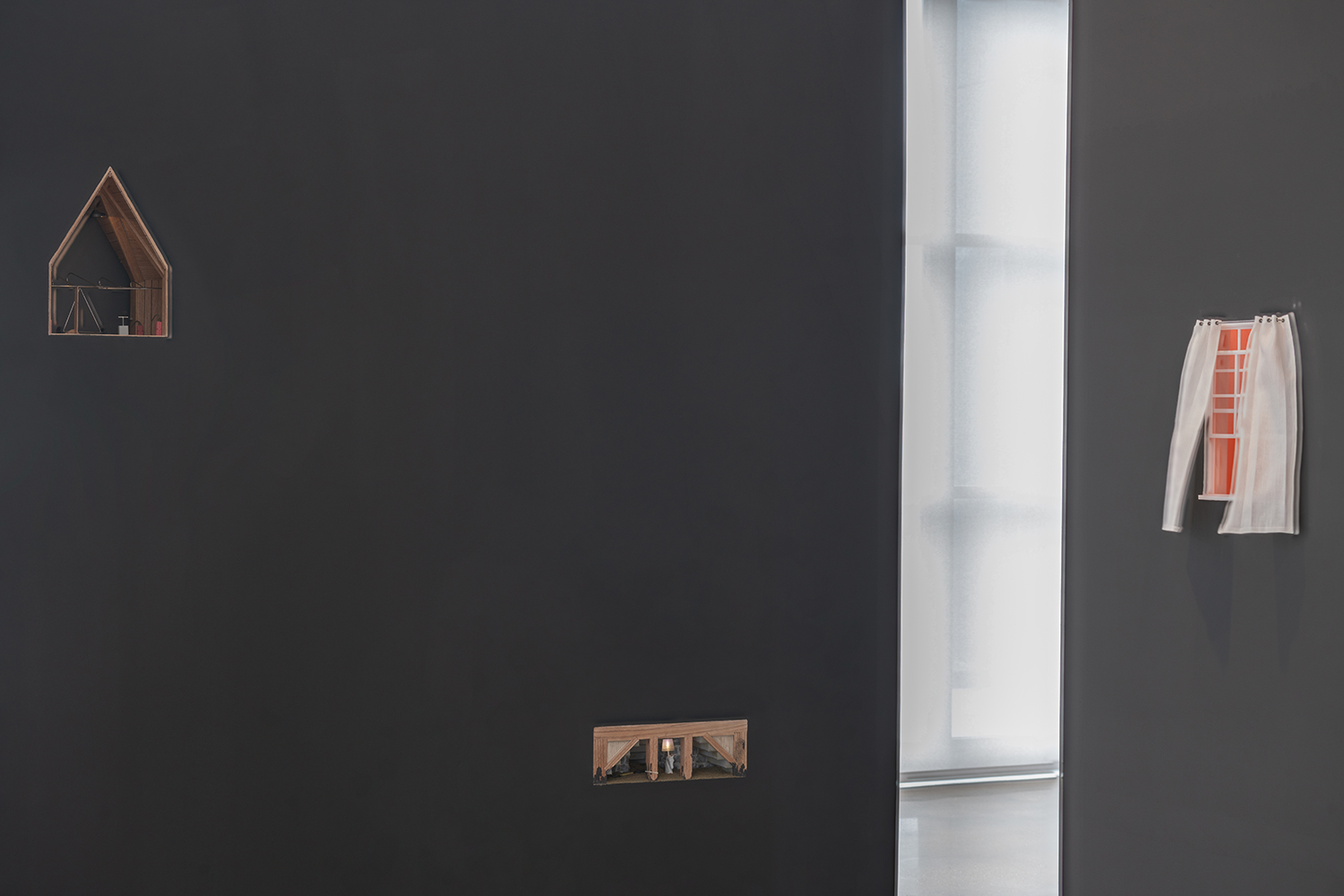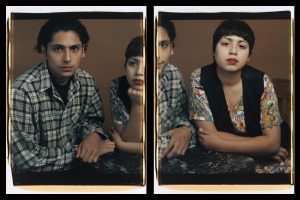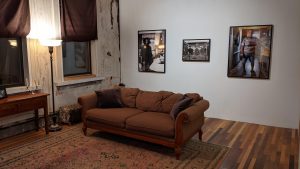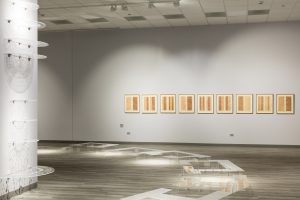“All of our worlds shrunk down to our homes and our thoughts,” writes artist Madeleine Leplae about this past year, during which she began to appreciate time spent outdoors and decided to paint trees, albeit ones with unreal proportions and vibrant backgrounds. Her painting Sappy Tree, 2020, with its unusually long trunk and button-like appendages, appears almost human. The piece is currently on view as part of the group show Usual Objects at Carrie Secrist Gallery, now housed in the residences at 900 West (Washington). Featuring the work of Chris Bradley, Nicole Dyer, Brendan Getz, Madeleine Leplae, Matt Lipps, Liliana Porter, and Amanda Ross-Ho, the exhibition focuses on the still life genre, which might seem quaint (outdated?) in these socially and politically charged times, but is in fact apropos to our current moment. Many of the works were created in the past year, when all of us, artists included, spent much time at home, among our possessions.
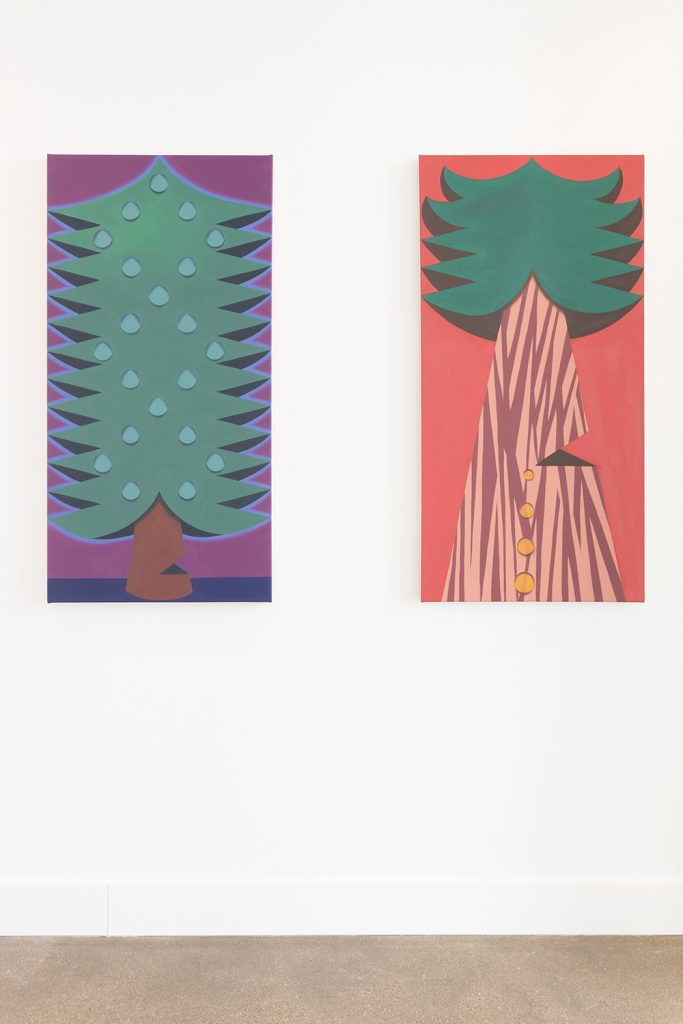
The first three artists in the show present objects that are dramatically smaller than life size. This can be read as a metaphor for the way our worlds have recently shrunk or may refer to our feelings of claustrophobia from inhabiting the same spaces day after day. Liliana Porter’s Untitled with Ironing Board, 2018, places miniature domestic objects and furniture on top of swaths of blue paint. While some scenes are upright, others are upended, upsetting our usual order and bringing to mind the way ordinary household tasks can seem monumental under our current circumstances. In this same vein, Chris Bradley has created several site-specific miniature rooms installed directly into the gallery walls. Peeking into the small spaces, one can see unusual places like hidden chambers, attics and basements, staircases leading nowhere, and windows with limited views.
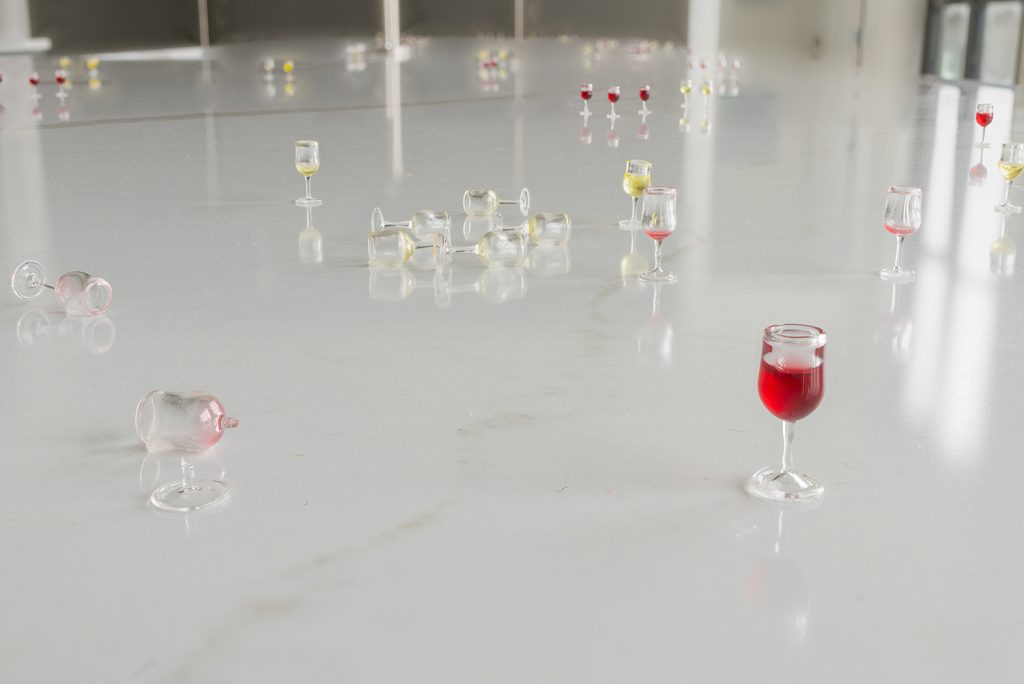
The most stunning example of small-scale still life in the show is Amanda Ross-Ho’s Untitled Opening (NOIR AND BLANCO), 2015. As Secrist’s current gallery is in a residential space, this show takes place at a two-story penthouse. Untitled Opening features three sets of thirty-five 1:12 scale wine glasses in various states of fullness, upright and tipped over, red and white, on a sprawling kitchen island. This is an artwork that needs to be seen in person to realize not only the dichotomy in scale, but also the excess—of alcohol and of the immense, immaculate penthouse kitchen.
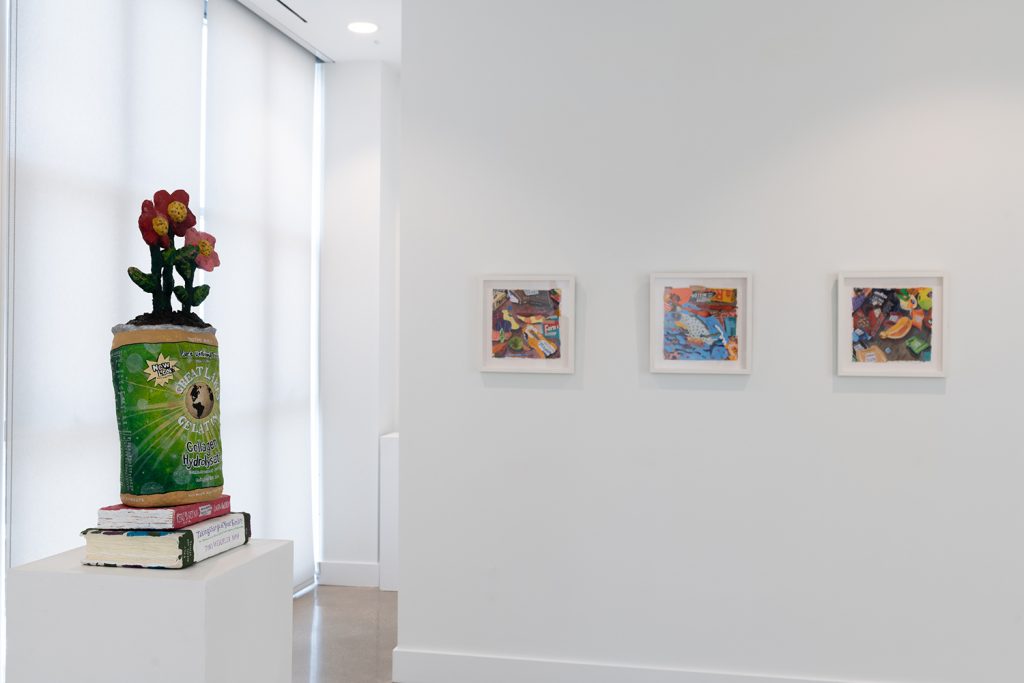
“My work examines a need for excess in the wake of restriction,” says Nicole Dyer, whose piece de la Rosa, 2019 is also showcased in Usual Objects. While that statement equally describes Ross-Ho’s piece, Dyer has personal referents, not societal ones. For health reasons, she began restricting the foods in her diet, which impacted her practice: “As my food list shrank, my paintings ballooned: domestic landscapes crowded with health books and food wrappers and children’s toys, the paint itself bloated with glitter and candy and sea glass. […] My paintings are a meditation on disordered eating in an age of overconsumption.” One of the upstairs bedrooms is adorned with Dyer’s collages, which are a visual highlight of the show. Mixtures of wrappers and depicted food (both natural and processed), adorned with applications of paint, are both eye and mouth-watering; food serving as one of our guilty pleasures as well as a source of joy during a time when we have little access to the things that make us happy.
Appropriately placed in the kitchen and surrounding hallways are Brendan Getz’s still lives. In the tradition of Luc Tuymans and Giorgio Morandi, Getz depicts fetishized, dreamlike domestic objects such as an ice tray, bookends, a toaster, and a drinking glass. He poetically writes, “A cared for object – caring world. A disposable object – disposable world.” Using a minimal palette, subtle color contrasts, shadows, and distinct brush strokes, Getz’s attention to detail demonstrates a caring for his subjects that elevates them above “usual object” status. These lyrical and elegant paintings provide a sense of serenity in these turbulent times.
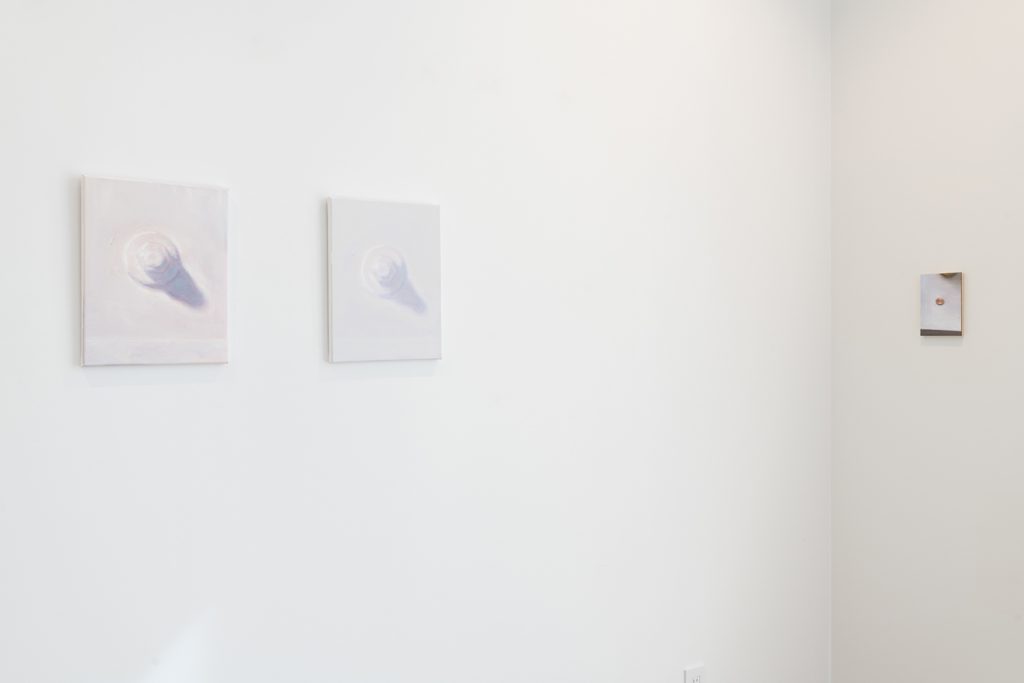
While the history and connotations of the museum/gallery “white cube” are subject to debate, viewing an exhibition in a luxury condominium is an entirely different experience. At times, the architectural elements as well as the temptation to look at the breathtaking view of the city through the floor-to-ceiling windows distracted from the art (there are reasons beyond conservation that art is shown against white walls). However, the premise of the exhibition is that we all, artists too, are viewing our world and our objects from the vantage point of home. In this regard, the setting is conceptually consistent.
Social distancing and other concerns mean people may choose to forgo an in-person visit. Luckily, Usual Objects is presented in an exceptional online viewing room—all the incredible art without the distractions or the commute. This is an exhibition well worth seeing—either online, at the gallery, or both—for its poetic commentary on our lives at home with the objects we surround ourselves with.
Usual Objects is on view at Carrie Secrist Gallery through April 24, 2021.
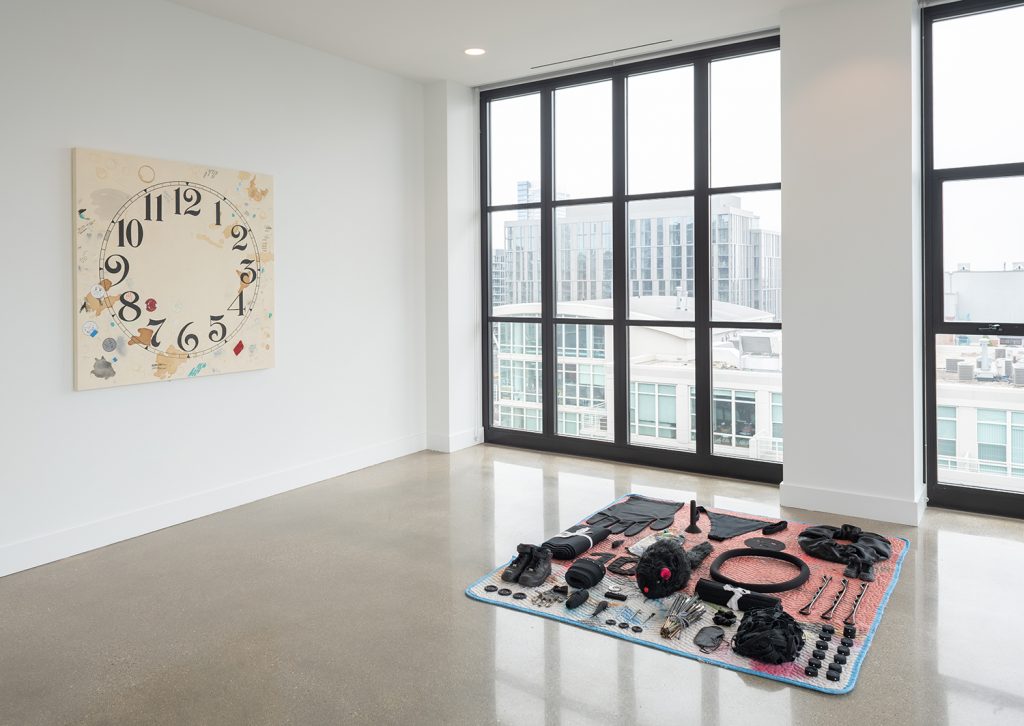
Featured image: Chris Bradley, installation view of Usual Objects. From left to right: Attic, 2021. Wood, stainless steel, steel, aluminum tube, 3D printed PLA, black cord, LED, acetate, paint, 15 x 14.5 x 14 inches. Cellar, 2021. Wood, steel, 3D printed PLA, epoxy putty, paint, LED, modeling turf, twine, 12 x 15 x 10 inches. Breeze, 2021. Wood, steel, stainless steel, 3D printed PLA, PET plastic, LEDs, muffin fans, fabric, 19 x 19 x 19 inches. Image courtesy of the artist and Carrie Secrist Gallery.

Susan J. Musich spent twenty years as an educator at the Museum of Contemporary Art Chicago communicating fresh perspectives to non-specialist audiences. This experience infuses her approach to writing about art. In addition to freelance writing, Musich serves as a consultant to local foundations and manages the tour program at EXPO CHICAGO.
